Site will be
unavailable for maintenance from June. 4, 11:30 p.m., to June 5, 12:30 a.m. ET. Thank you for your
patience!
How the Global Water Crisis Affects Children -- and All of Us
Posted on 04/29/2021
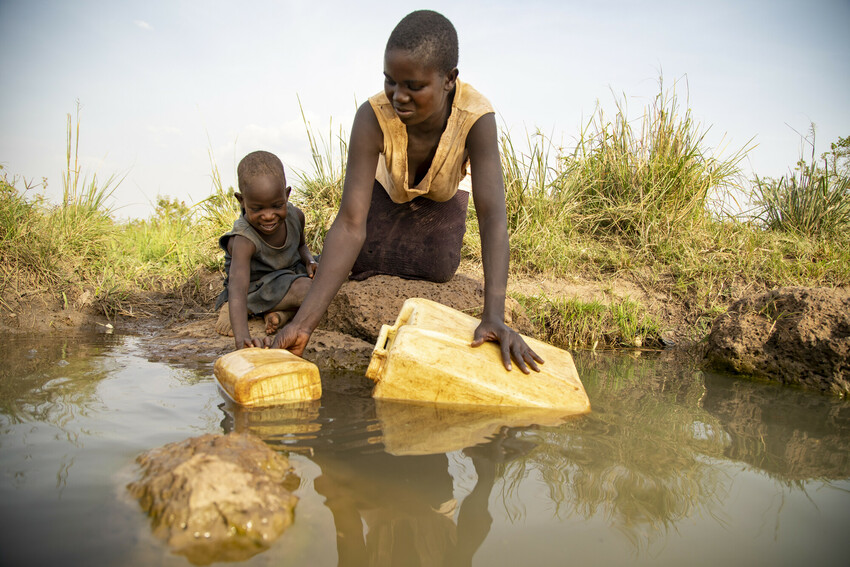
Every morning, just before the sun peeks over the horizon in Uganda, 6-year-old Magdalene wakes up in the darkness with her mother to walk a little over 3 miles to the nearest pond. They dip jerrycans into the murky water to fill them, then make the 3-mile trek home, carefully balancing the cans on their heads. By the time they’ve returned, boiled the water and washed Magdalene’s face, it’s already mid-morning – much too late for Magdalene to walk the extra mile to get to school.
Water is the most fundamental of our basic human rights. Without it, we can’t survive more than a few days. But many people like Magdalene and her family – about 2.2 billion people worldwide, in fact – have no reliable access to clean, safe water. As a result, millions of girls like her miss school regularly, and 295,000 underprivileged children under age 5 die from diarrhea linked to inadequate water, sanitation and hygiene every year.
Why Doesn’t Everyone Have Clean Water?
For those of us who can fill a glass of water or enjoy a hot shower simply by turning on a faucet, it can be hard to imagine how and why so many people experience such a dire lack of clean water. The answers are complicated, but they are all rooted in the inequities between wealthy and poor people, communities and nations.
Lack of infrastructure and poor management of services in disadvantaged communities are part of the reason why people experience a lack of clean water. Even where efforts have been made to reach people with water, if communities and governments are not trained on how to maintain water systems, they can break down over time and fail to be repaired. One 2009 study estimated that there are 50,000 water supply points across Africa that are not functioning.
Another problem is climate change. Poor communities are disproportionately impacted by extreme weather events that are becoming more and more frequent because of changing climate: A drought brings water scarcity one year; the next year, excessive flooding pollutes water sources and causes outbreaks of disease. UNICEF predicts that climate change will cause extreme water stress for almost 600 million children by 2040.
And because the human population is growing at such an unprecedented rate, we can certainly expect high demand to put an intense strain on this already fragile resource. In 2018, Cape Town, South Africa, became the first major metropolitan city to almost completely run out of water after a years-long drought, causing widespread panic and painting a sobering picture of the climate crisis to come. Magdalene’s 6-mile walk for dirty water seems far removed from us now, but if we don’t take global water scarcity more seriously, it could become our own children’s or grandchildren’s morning routine.
What Happens When You Drink Dirty Water
Imagine that, one morning, you did accompany Magdalene and her mother on their trip to the pond. What would happen if you got thirsty on the walk home and decided to take a sip from the jerrycan? You might feel fine at first, but after a few hours, your stomach would start to cramp. Nausea would set in. Depending on what bacteria or parasites were in the water you drank, you might get just a little sick or fall extremely ill.
Contaminated water can contain and transmit diseases like diarrhea, cholera, dysentery, typhoid and polio. Infants and young children are especially susceptible to these diseases because their immune systems are experiencing everything for the first time. Even a mild case of diarrhea for adults can be fatal to a baby or toddler. You might be surprised to know that diarrhea is the second leading cause of death among children under 5.
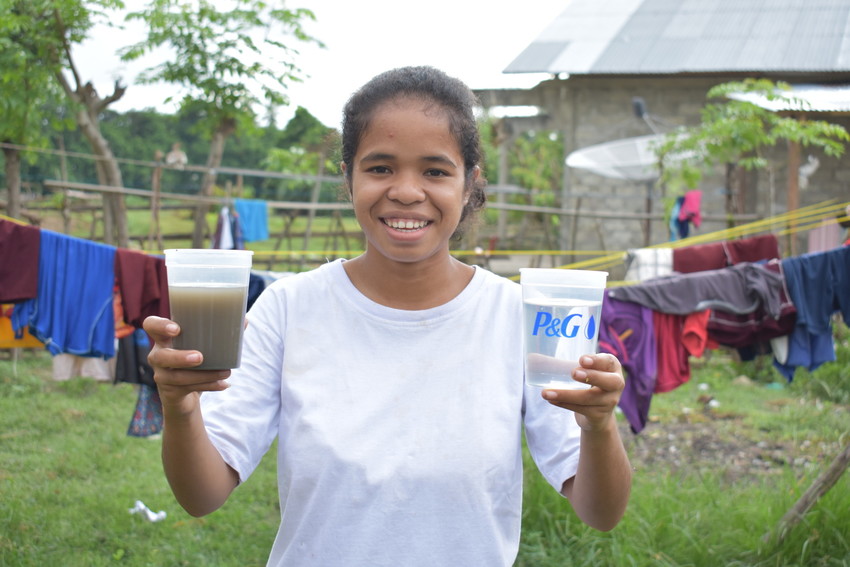
Veronika, a teenager in ChildFund’s programs in Indonesia, holds up a cup of her community’s drinking water before and after treatment with a P&G Purifier of Water packet. ChildFund distributes these packets to children around the world to help protect them from waterborne disease. Veronika’s story was featured in The Power of Clean Water, a documentary made in partnership with P&G and National Geographic.
Another problem associated with lack of clean water is exposure to harmful chemicals such as fluoride and lead. Where ChildFund works in India, for example, untreated groundwater often contains high levels of fluoride, which can lead to a debilitating bone disease called skeletal fluorosis. Skeletal fluorosis weakens children’s bones and causes stiffness and pain in the joints. Eventually, it can lead to serious deformities that make daily life a challenge.
But chemical exposure isn’t only a problem for people in the so-called developing world. The city of Flint, Michigan, made news headlines in 2014 after making a cost-saving decision to switch its drinking water supply from the Detroit system to the Flint River. Inadequate treatment and testing of the water resulted in a series of major health issues for residents – especially children, many of whom suffered developmental delays due to lead poisoning. Flint has one of the highest poverty rates in the nation, perhaps one reason why officials largely ignored residents’ complaints about lack of clean water until they mounted into activism.
When money is valued over human life, it is always children who suffer most. We all have a responsibility to maintain clean water systems and help underprivileged children access safe water in their homes, schools and communities.
How Clean Water Organizations Help
Around the world, nonprofit clean water organizations are working in tandem with local and national governments to address the issues caused by lack of clean water. Children’s charities like ChildFund that work internationally often have clean water components to support children in their programs, building wells and other water supply points in the communities where they work so that children don’t have to travel far to get to clean water. In our 80-year history, we have made access to clean water possible for millions of children and their families.
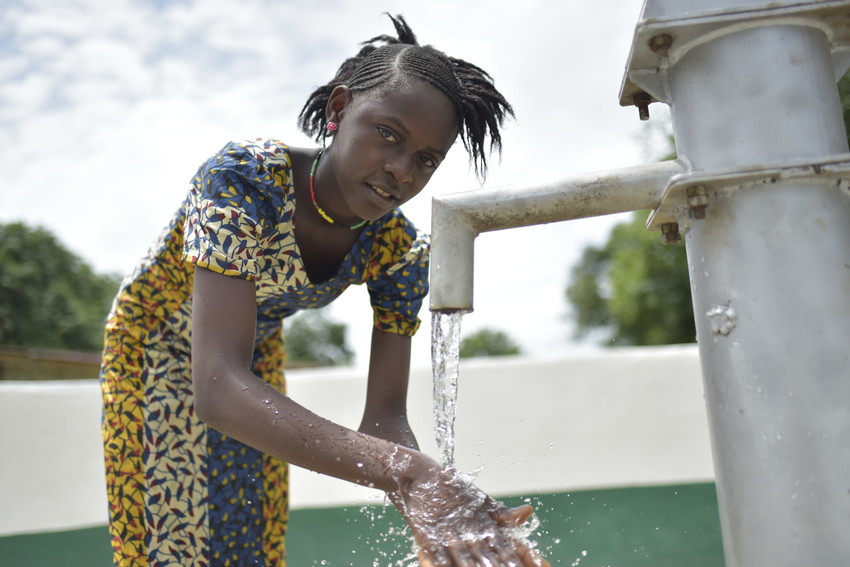
Rugiatu, 12, washes her hands at a new well built by ChildFund in Sierra Leone. “The new well is the best thing that has ever happened to me,” Rugiatu says. “If it were not for this well, I would still be struggling to fetch water from the swamp. Life is so much easier for us now.”
But it’s not enough to just build a well and call it a day. For every water supply point that ChildFund builds, we also train a Water Management Committee within the school or community where we build it. This committee learns about the water point’s infrastructure and how to properly maintain it so that the water point doesn’t eventually become one of those 50,000 broken wells.
ChildFund also invests in environmentally friendly, innovative water solutions that provide a sustainable source of clean, safe water for multiple communities: a water pyramid in The Gambia that uses a borehole and a rainwater collection system to deliver up to 5,000 liters of water per day to families in the Foni Bintang Karanai District; a solar-powered water pumping system in Meru County, Kenya, to mitigate the effects of climate change and help families continue to farm even during periods of drought. And, through our partnership with the P&G Children’s Safe Drinking Water Program, we have distributed millions of liters of clean water to children.
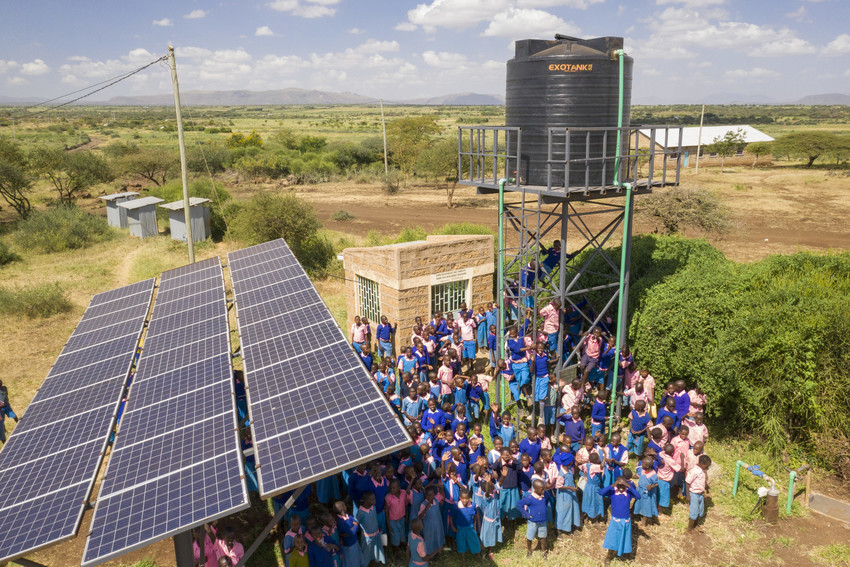
ChildFund drilled a solar-powered water pumping system to provide running water to an entire community in Meru County, Kenya, including this primary school.
Fueling the work of clean water organizations and other children’s charities is an easy way to fight the negative effects of inequality and climate change in kids’ lives. It can allow us to rewrite the story for families like Magdalene’s. Until then, they’ll be waking up before the sun every day, walking to the pond and carrying the burden of unsafe water on their shoulders.
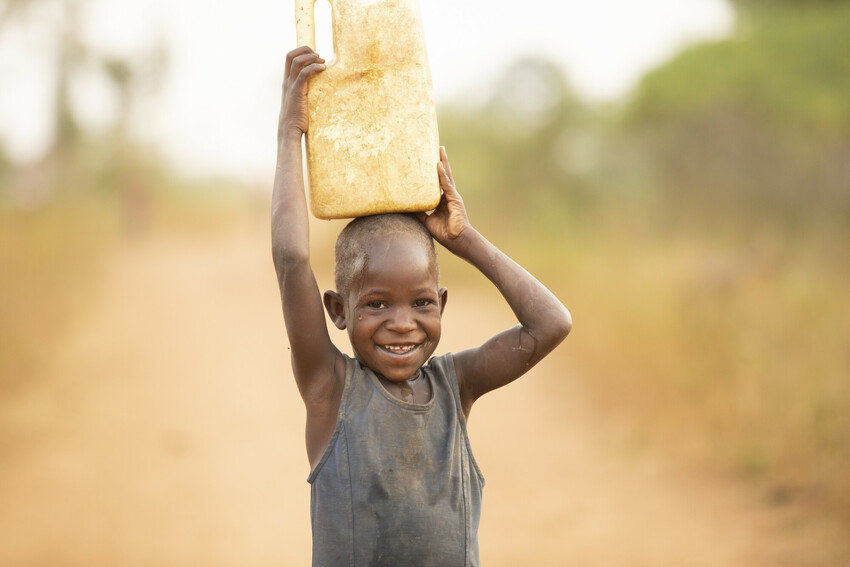
Loading...


